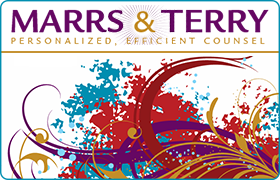 Gaastra Reorganization Lawyers, Michigan
Gaastra Reorganization Lawyers, Michigan
Sponsored Law Firm
-
 x
x

Click For More Info:
-
Marrs & Terry, PLLC
6553 Jackson Road Ann Arbor, MI 48103» view mapBankruptcy & Debt Personalized, Efficient Counsel
Marrs & Terry, PLLC have been helping individuals face a variety of legal challenges, including bankruptcy, estate planning and administration, and family law.
800-862-7221
Not enough matches for Gaastra Reorganization lawyer.
Below are all Gaastra lawyers.
Lawyers
1-3 of 3 matches
Accident & Injury, Lawsuit & Dispute, Mass Torts, Motor Vehicle, Zantac
Personal Injury, Wrongful Death, Medical Malpractice, Products Liability, Railroad Injury





 Tricia Terry Ann Arbor, MI
Tricia Terry Ann Arbor, MI AboutExperienced Michigan Lawyer
AboutExperienced Michigan Lawyer Articles
Articles